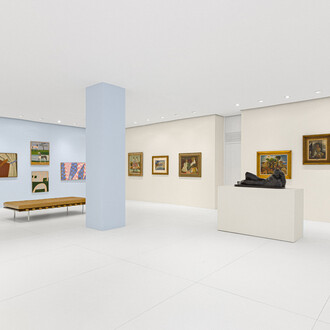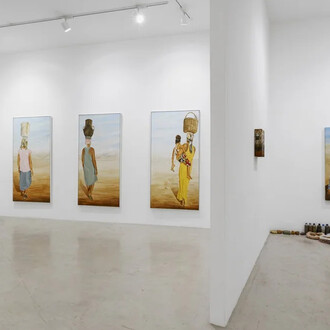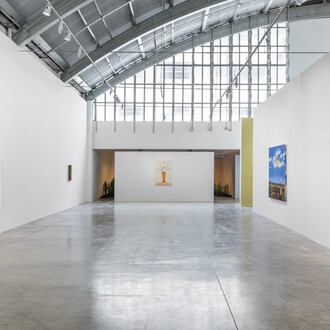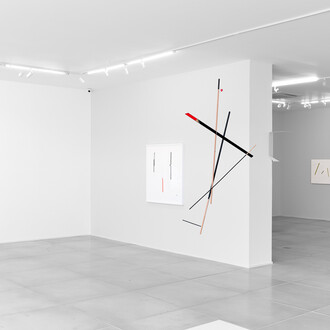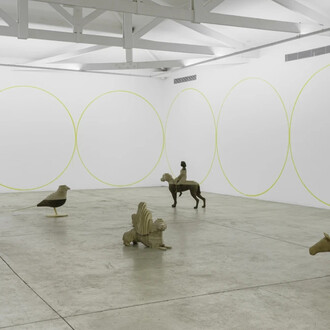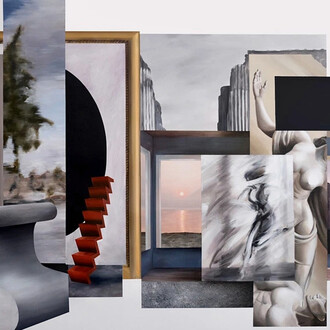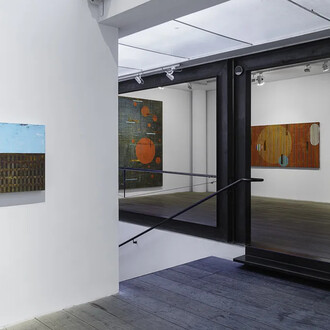On May 22, Bergamin & Gomide opens its second exhibition venue, located in Vila Modernista, just one block from the gallery in the Jardins district, in São Paulo. The house, which will allow the gallery to double its exhibition program, was designed in 1933 by the multifaceted artist Flávio de Carvalho and features an essay by Guilherme Wisnik, art and architecture critic.
The venue opens to the public presenting José Resende’s first solo show at Bergamin & Gomide, which takes place from May 22 to July 3rd. The exhibition showcases two new installations produced by the artist, one on the side façade and another that is occupying the central area of the house’s atrium, in addition to a selection of works dating from 1975. The installations that José Resende created for the House suggest to the public the intention of a displacement through the space and draw the attention of those who pass by the street, directing the passer’s eye to the small circular awning on the rooftop at the entrance of the gallery.
Encompassing over 50 years of career, José Resende has an extensive curriculum, participated in four Bienais de São Paulo (1967, 1983, 1989, 1998), at the 43rd Venice Biennale (1988) and Documenta IX (1992). The artist-architect’s production is characterized by the interest in establishing an authentic experience between matter and its tensions with space, which are notable for the power of form synthesis. The artist’s practice is predominantly sculptural, in which he investigates materials and their ramifications. Based on the constant dialogue between architecture and urban space, José Resende produced throughout his career relevant public works, such as the sculpture Passante (1996) at Largo da Carioca and Sorriso (2015) created for his solo show at the Pinacoteca do Estado de Sao Paulo.
A white house displaying a protruding semicircular bulge on its facade, crowned by a round marquee supported by a center column that spans the entire volume of the house and descends to the ground floor, defining the front porch plan. Thus, the construction marks its curious presence in the city.
(Guilherme Wisnik)
For partners Antonia Bergamin and Thiago Gomide, opening an exhibition venue in a historic house has always been a dream. A tip from a friend that the House was available was what was missing; when visiting the space, it was love at first sight; there it would be the second venue of Bergamin & Gomide.
The renovation sought, carefully, to preserve the Modernist characteristics of the property that is part of a development of 17 residences designed and incorporated by Flávio de Carvalho on his family lot, between Alameda Lorena and Alameda Ministro Rocha Azevedo. Vila América - currently known as Vila Modernista - is today an art and culture hub where art galleries and architecture offices are located.
For Wisnik, “It’s commendable that nowadays private institutions such as art galleries are committed to restoring residential projects that are part of our modern architectural heritage, returning them to collective fruition.” Indeed, the strategy of opening a new venue is part of an investment in the future of São Paulo’s culture and art. Although art galleries are still seen as spaces of luxury, the partners hope that the expansion contributes to a greater dissemination of cultural expression in the city and that it reaches the plurality of the public appreciating art.
Considering the situation that Brazil is experiencing, such as the severe economic consequences resulting from the Covid-19 pandemic - coupled with the federal dismantling of cultural, art, and research sectors - the gallery’s expansion takes on even more daring contours.
If for the radical and provocative Flávio de Carvalho the city would be the true home of the “man of tomorrow”, opening this space after eighty years of its inauguration means for Bergamin & Gomide to preserve the city’s memory and contribute to that art and culture continue to encourage the construction of critical thinking today and tomorrow.





